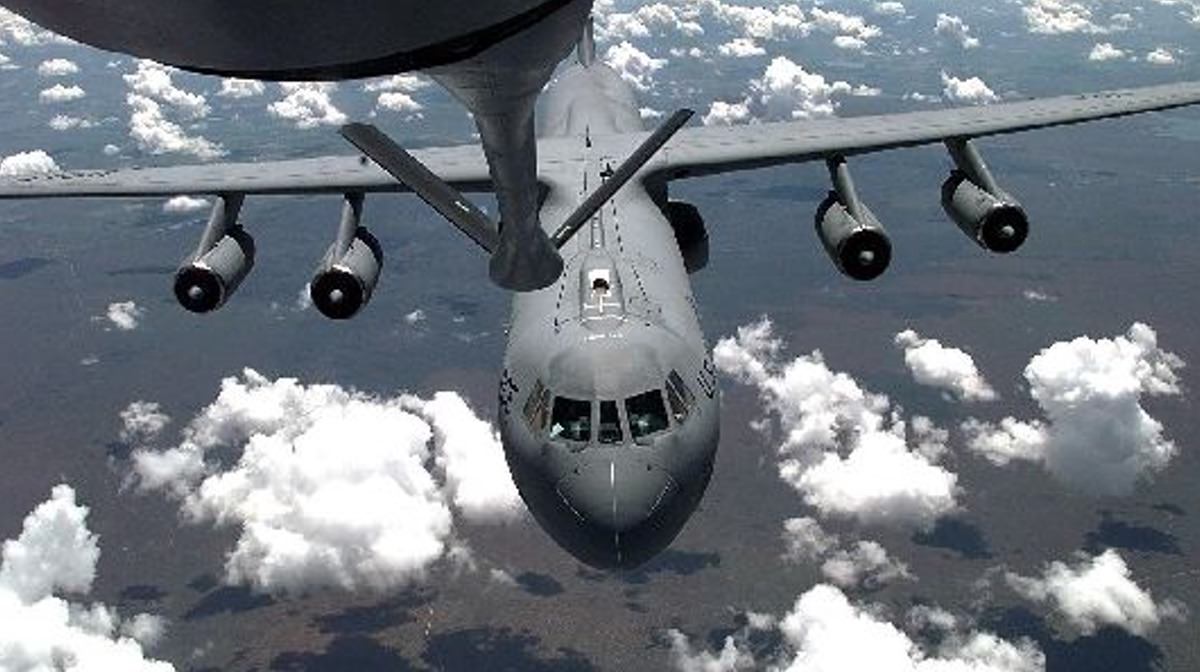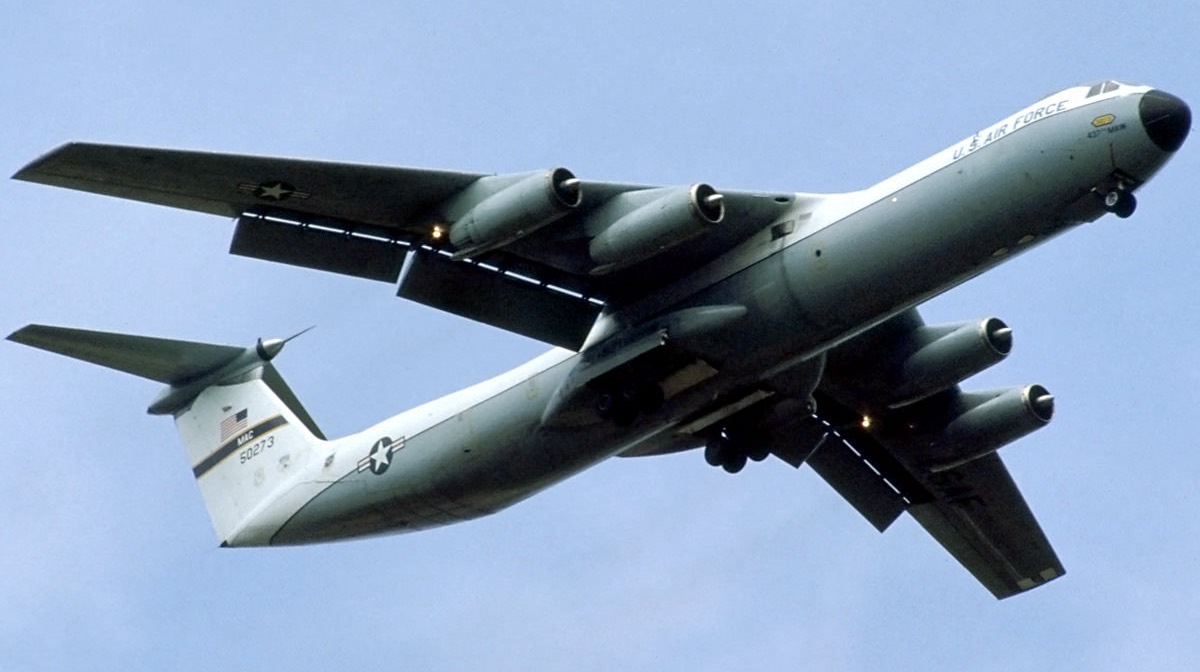Price: $39.95
- 2 magazines, 16 manuals, & photos
- PDF contains 6,424 pages
- Content is keyword searchable
- Print a personal copy
- Pay via PayPal or Credit Card
- International orders welcome!
- Download files upon payment
December 1998
- History of US Military Aircraft… C-47, C-54, C-82, C-119, C-123, XC-99, C-124, C-130, C-133, C-141, C-5A, C-17
- Graphic gallery of Air Transport
- Allied airpower’s D-Day invasion failures, great interdiction
October 2005
- Lockheed Starlifter – Venerable Jet-Powered Skytruck Finally Retires
- Miami Clippers – The Story of Pan Am’s First Seaplane Base
- Good, Better, Best – How Jet Aircraft Designs Evolve
Manuals & Photos
- C-141A Flight Manual, 1972
- C-141B Training Handbook
- C-141C Flight Manual, 2002
- C-141C Flight Manual, 2003
- C-141B Loading Instructions, 2002
- C-141B Performance Data, 2003
- C-141B Weight & Balance Loading Data, 1991
- C-141 Narrative USAF, 1973
- C-141 Operations Minimum Equipment List, 1996
- C-141 Qualification Course, 1984
- C-141C Checklist Flight Engineer, 2003
- C-141C Checklist Loadmaster, 2003
- C-141C Checklist Medical Crew, 2003
- C-141C Checklist Navigator, 2003
- C-141C Checklist Pilot, 2003
- C-141C Checklist Scanner, 2003
- C-141 Structural Problems in Desert Storm, 1992
- Lockheed-Georgia C-141A Brochure
- Over 100 Lockheed C-141 Starlifter photos
Lockheed C-141 Starlifter
C-141B Specifications
Variants
On Display
Cutaway
Videos
 General Characteristics
General Characteristics
- Crew: 5–7: 2 pilots, 2 flight engineers, 1 navigator, 1 loadmaster (a second loadmaster routinely used, in later years navigators were only carried on airdrop missions); 5 medical crew (2 nurses and 3 medical technicians) on medevac flights
- Length: 168 ft 4 in (51.3 m)
- Wingspan: 160 ft 0 in (48.8 m)
- Height: 39 ft 3 in (12 m)
- Wing area: 3,228 sq ft (300 m2)
- Empty weight: 144,492 lb (65,542 kg)
- Max takeoff weight: 342,100 lb (147,000 kg)
- Powerplant: 4 × Pratt & Whitney TF33-P-7 turbofans, 20,250 lbf (90.1 kN) thrust each
Performance
- Maximum speed: 567 mph (912 km/h, 493 kn)
- Range: 2,935 mi (4,723 km, 2,550 nmi)
- Ferry range: 6,140 mi (9,880 km, 5,330 nmi)
- Service ceiling: 41,000 ft (12,500 m)
- Rate of climb: 2,600 ft/min (13.2 m/s)
- Wing loading: 100.1 lb/sq ft (490 kg/m2)
- Thrust/weight: 0.25
C-141A
The original Starlifter model, designated C-141A, could carry 154 passengers, 123 paratroopers or 80 litters for wounded with seating for 16. A total of 284 A-models were built. The C-141A entered service in April 1965. It was soon discovered that the aircraft’s volume capacity was relatively low in comparison to its lifting capacity; it generally ran out of physical space before it hit its weight limit. The C-141A could carry ten standard 463L master pallets and had a total cargo capacity of 62,700 pounds (28,400 kg). It could also carry specialized cargoes, such as the Minuteman missile.
NASA obtained Lockheed’s C-141 demonstrator, designated L-300. The airplane was modified to house the Kuiper Airborne Observatory (KAO) telescope for use at very high altitudes. This aircraft, NC-141A is in storage at NASA Ames Research Center, Moffett Federal Airfield, California. The KAO was retired in 1995 and was replaced by the 747SP-based Stratospheric Observatory for Infrared Astronomy (SOFIA).
C-141B
In service, the C-141 proved to “bulk out” before it “grossed out”, meaning that it often had additional lift capacity that went wasted because the cargo hold was full before the plane’s weight capacity had been reached. To correct the perceived deficiencies of the original model and utilize the C-141 to the fullest of its capabilities, 270 in-service C-141As (vast majority of the fleet) were stretched, adding needed payload volume. The conversion program took place between 1977 and 1982, with first delivery taking place in December 1979.[4] These modified aircraft were designated C-141B. It was estimated that this stretching program was equivalent to buying 90 new aircraft, in terms of increased capacity. Also added was a boom receptacle for inflight refueling. The fuselage was stretched by adding “plug” sections forward and aft of the wings, lengthening the fuselage a total of 23 feet 4 inches (7.11 m) and allowing the carriage of 103 litters for wounded, 13 standard pallets, 205 troops, 168 paratroopers, or an equivalent increase in other loads.
SOLL II
In 1994, a total of 13 C-141Bs were given SOLL II (Special Operations Low-Level II) modifications, which gave the aircraft a low-level night flying capability, enhanced navigation equipment, and improved defensive countermeasures. These aircraft were operated by AMC in conjunction with Air Force Special Operations Command (AFSOC).
C-141C
A total of 63 C-141s were upgraded throughout the 1990s to C-141C configuration, with improved avionics and navigation systems, to keep them up to date. New capabilities, including traffic collision avoidance system (TCAS) and Global Positioning System (GPS), were added to aircraft that received this upgrade package. This variant introduced some of the first glass cockpit technology to the aircraft, as well as improving reliability by replacing some mechanical and electromechanical components with more modern electronic equivalents. The final C-141C were delivered during late 2001.
- 61-2775 “First of the Fleet” – C-141A is on display at the Air Mobility Command Museum at Dover Air Force Base near Dover, Delaware. This airframe is the first C-141 built
- 61-2779 “Against the Wind” – NC-141A is stored at the Air Force Flight Test Museum at Edwards Air Force Base near Rosamond, California. It was used as an Advanced Radar and Electronic Counter Countermeasures Test Bed.
- 63-8079 “City of Charleston” – C-141B is on display at the Charleston AFB Air Park at Charleston Air Force Base in Charleston, South Carolina.
- 63-8088 “The Golden Bear” – C-141B is on display at the Travis Air Force Base Heritage Center at Travis Air Force Base near Fairfield, California. It was the first C-141 delivered to Travis AFB.
- 64-0626 – C-141B is on display at the Air Mobility Command Museum at Dover Air Force Base near Dover, Delaware.
- 65-0236 – C-141B is on display at the Scott Field Heritage Air Park at Scott Air Force Base near Belleville, Illinois. This airframe participated in Operation Homecoming returning POWs from Hanoi.
- 65-0248 – C-141C is on display at the Museum of Aviation at Robins Air Force Base near Warner Robins, Georgia. This replaced another airframe that was previously on display at the museum.
- 65-0257 “Spirit of the Inland Empire” – C-141B is on display at the March Field Air Museum at March Air Reserve Base in Riverside, California.
- MSN 6110 – L-300 is in storage at the Ames Research Center at Moffett Federal Airfield in Mountain View, California. It was used by NASA (NASA-714) as the Kuiper Airborne Observatory It was the only civilian Starlifter built.
- 65-0277 “Tacoma Starlifter” – C-141B is on display at the McChord Air Museum at McChord Air Force Base in Lakewood, Washington.
- 65-9400 – C-141B is on display at Altus Air Force Base near Altus, Oklahoma.
- 66-0177 “Hanoi Taxi” – C-141C is on display at the National Museum of the United States Air Force at Wright-Patterson Air Force Base in Dayton, Ohio. This aircraft was the last C-141 to be withdrawn from service.
- 66-0186 – YC-141B is on display at the Aviation History & Technology Center adjacent to Dobbins Joint Air Reserve Base in Marietta, Georgia. This is the first Starlifter to be converted from “A” model to “B” model.
- 66-7947 “Garden State Airlifter” – C-141B is on display at Starlifter Memorial Park at McGuire Air Force Base, New Jersey.
- 67-0013 – C-141B is on display at the Pima Air and Space Museum adjacent to Davis-Monthan Air Force Base in Tucson, Arizona.










